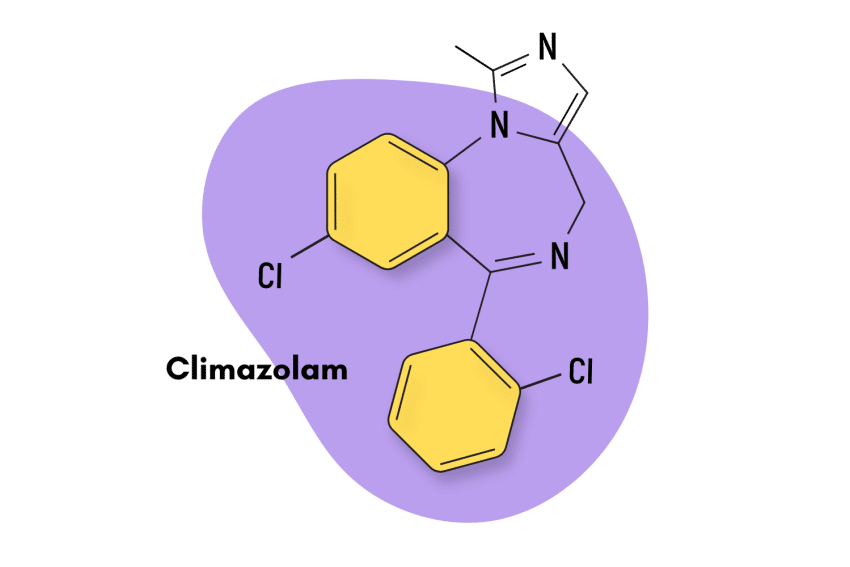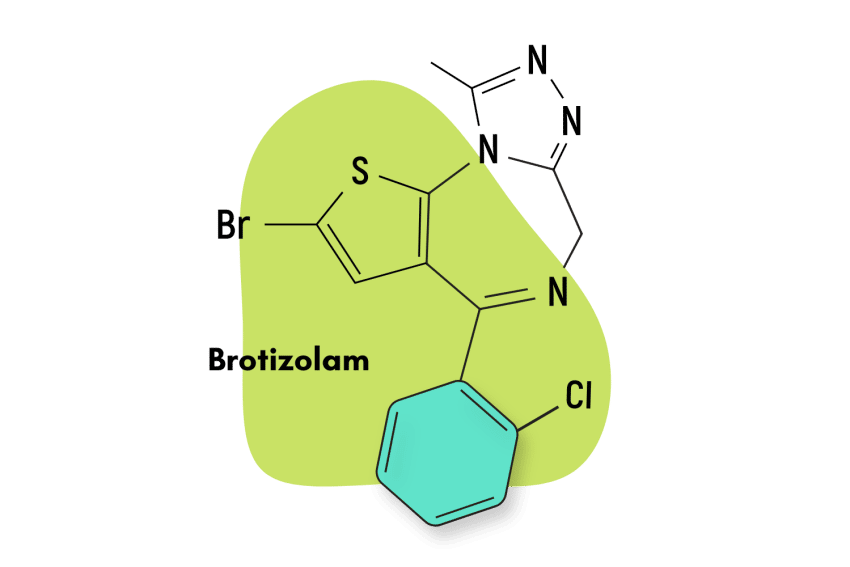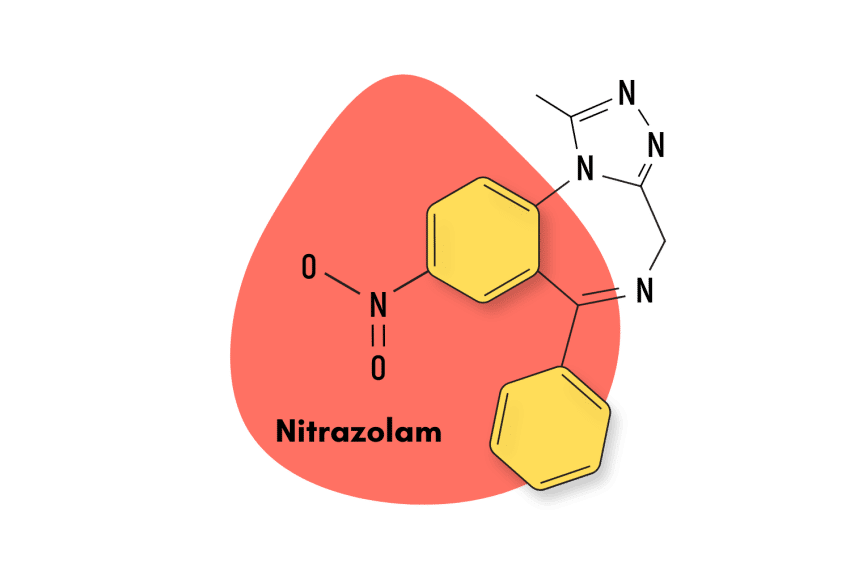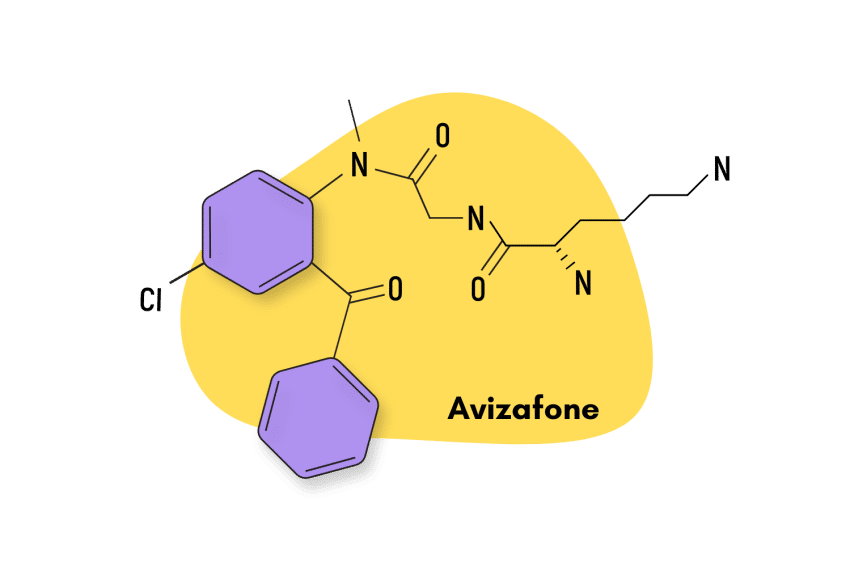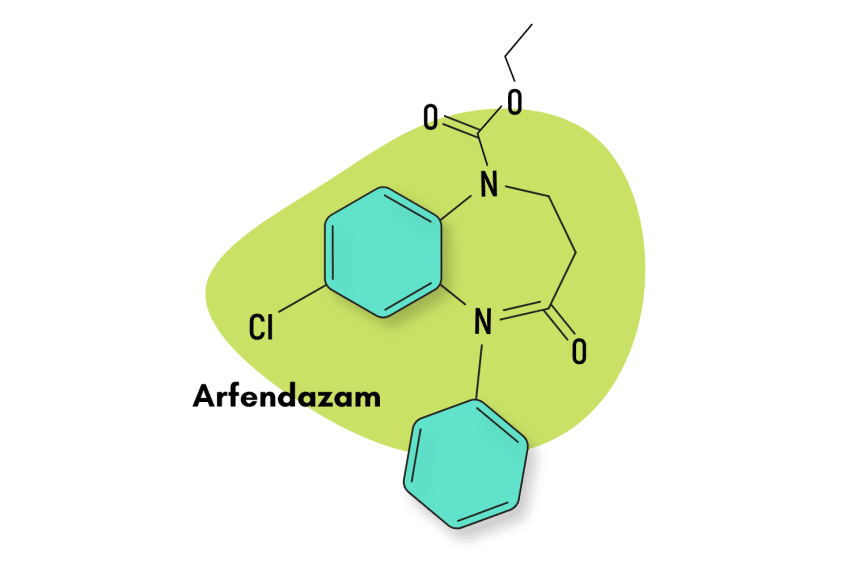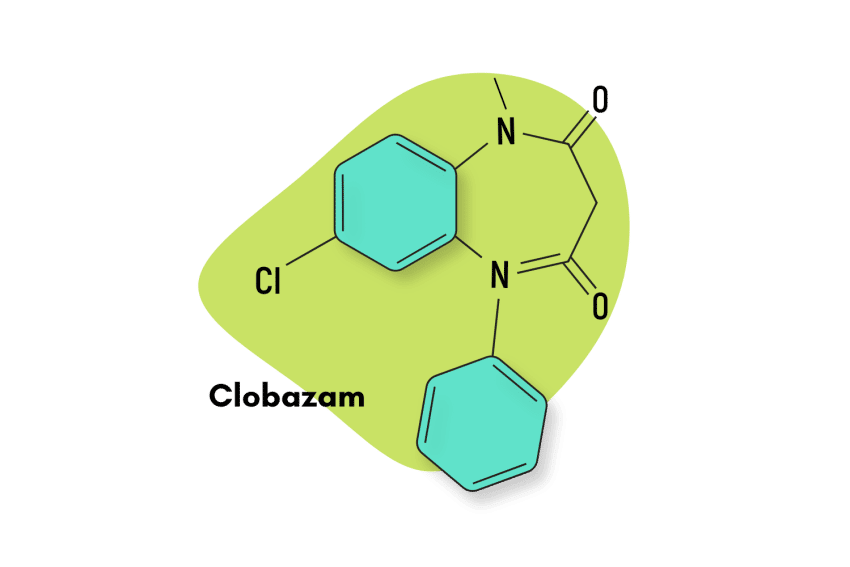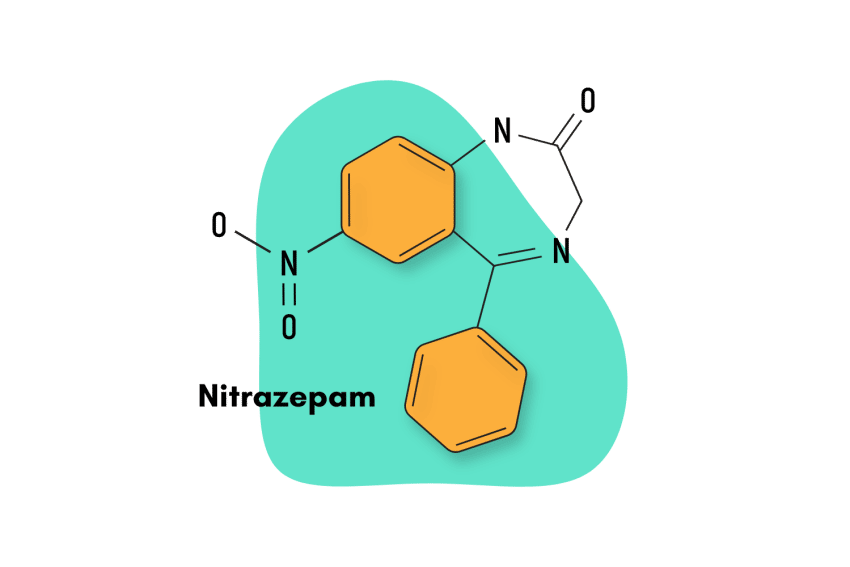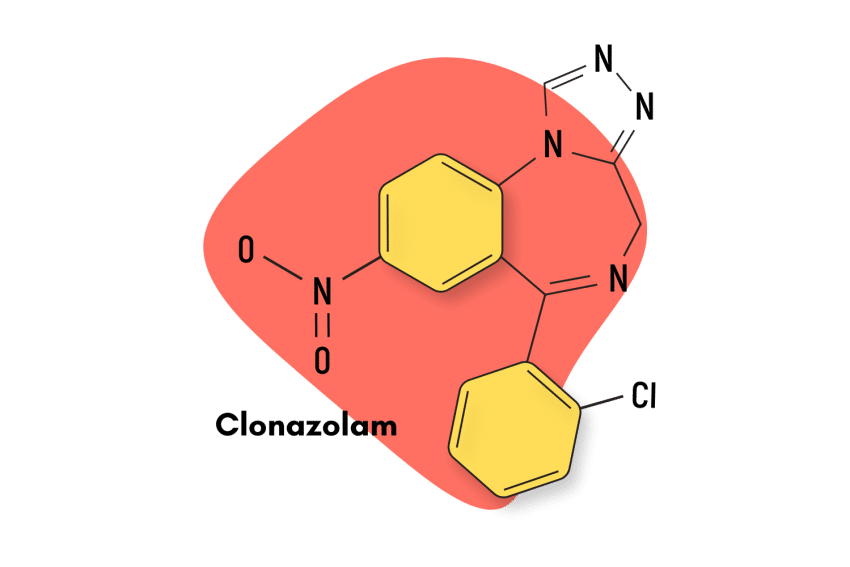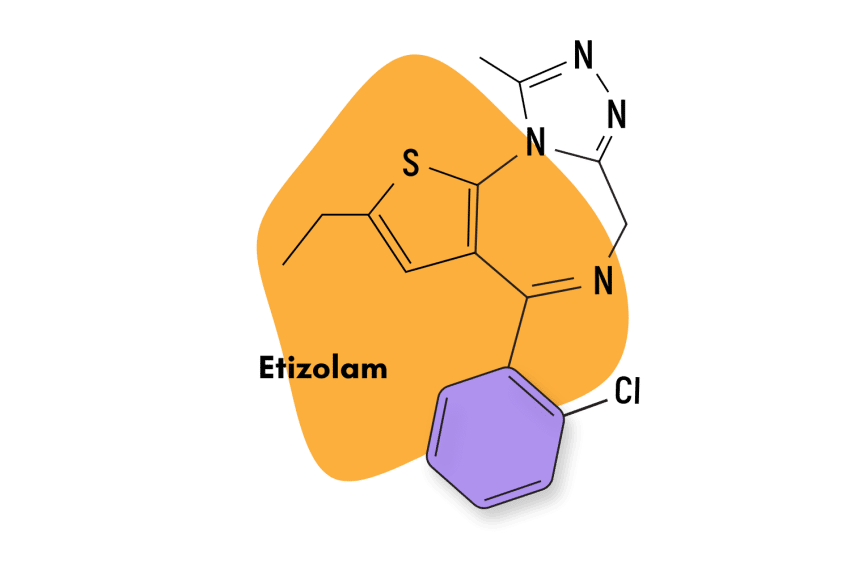Dirazepate: Fact Sheet & Harm Reduction Guide
Here’s what we know about this benzodiazepine — it’s not much, but we’re trying. 🤷
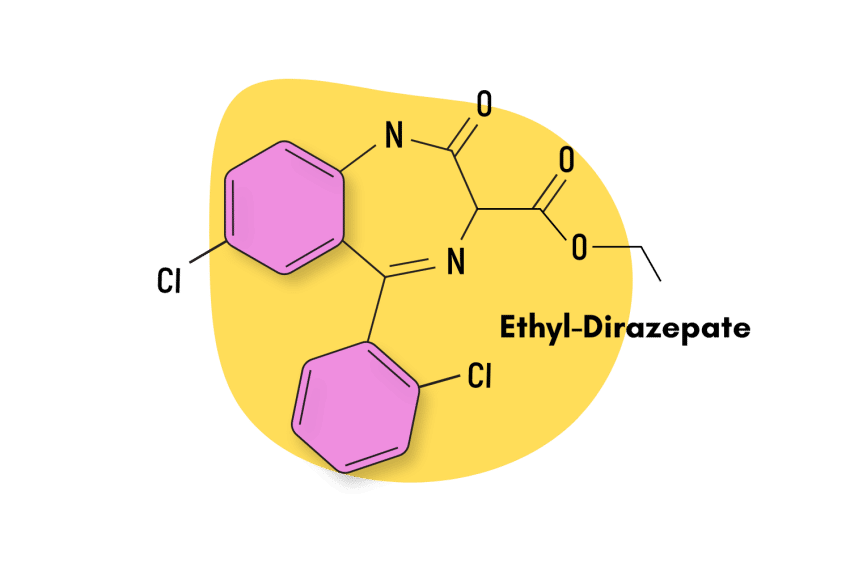
Apart from its patent and a couple of passing references in some obscure journals, there is practically no information on dirazepate in public databases. This makes the job of checking out its profile a hard one, as we’re mostly reduced to educated assumptions based on what we know of benzodiazepines in general.
Dirazepate, also known as ethyl dirazepate, is a “traditional” 1,4- benzodiazepine. As such, it is likely bound to display the anxiolytic, muscle-relaxant, hypnotic, anticonvulsant, and sedative effects associated with benzodiazepines.
As a medication, it was not found to have clinical effectiveness. This is why it was never brought to market and why researchers have paid so little attention to it in the scientific literature.
Dirazepate Specs
| Status | Research Chemical |
| Common Dosage | Unspecified |
| PubChem ID | 208941 |
| CAS# | 23980-14-5 |
IUPAC Name: ethyl 7-chloro-5-(2-chlorophenyl)-2-oxo-1,3-dihydro-1,4-benzodiazepine-3-carboxylate
Other Names: Ethyl dirazepate
Metabolism: Unfortunately, there are no studies on dirazepate’s metabolism we can turn to. However — assuming dirazepate’s similarity with other benzodiazepine compounds — its metabolism is likely hepatic and performed mainly through hydrolysis or biotransformation.
Duration of Effects: The duration of effects of dirazepate is a mystery, but as a 1,4- benzodiazepine, it is likely to be in the medium-to-long range [1].

Benzodiazepine Dosage Equivalency Calculator
**Caution:** Benzodiazepines have a narrow therapeutic window. Dose equivalents may not be accurate in higher doses.
This calculator does not substitute for clinical experience and is meant to serve only as a reference for determining oral benzodiazepine equivalence.
Please consult a medical practitioner before taking benzodiazepines.
How Does Dirazepate Work?
Like most other benzodiazepines — especially those in the 1,4-subclass — dirazepate is a GABA-A receptor agonist. Agonists like dirazepate potentiate the natural response associated with the receptor site.
In the case of GABA receptors — the chief source of inhibitory receptors in the body — benzodiazepines increase their depressive effects on the central nervous system (CNS). This then gives rise to the spectrum of benzodiazepine-related effects.
Plenty of compounds also interact with GABA, but it’s important to understand that they can do this through many different paths. When it comes to benzodiazepines, the reaction is an “allosteric effect.” This means the benzodiazepine molecule binds to a site other than the receptor’s active site.
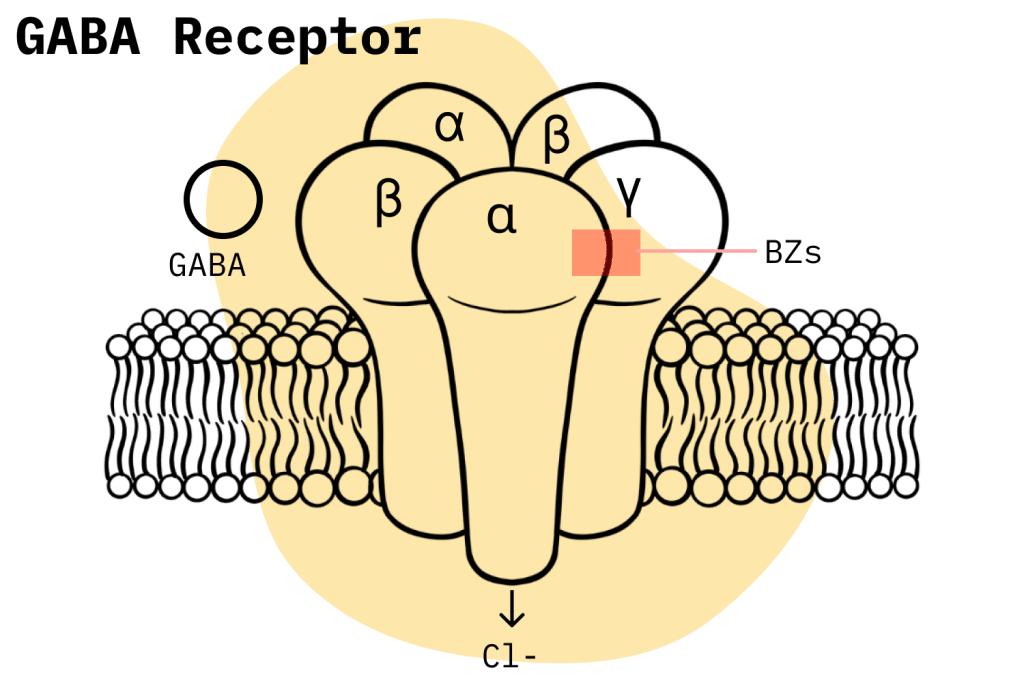
The GABA-mediated pathway is the mechanism of action utilized by most benzodiazepines, so it’s important to know its mechanics.
When benzodiazepine molecules bind to the GABA-A receptor sites, they make it so that neurons in the CNS become less likely to fire off action potentials, the electrical pulses they use to send signals. A reduction in action potentials in the CNS could lead to a “slowing down” in activity, causing a depressive effect [1].
The GABA pathway has further intricacies that are still not completely understood. We are still unsure how the different subunits of GABA-A receptors relate to a given benzodiazepine’s effects profile.
Though virtually all benzodiazepines utilize the GABA pathway, these compounds have plenty of meaningful differences.
Often, this extends beyond the world of pharmacokinetics and can lead to differences in effects as well.
Is Dirazepate Safe? Risks & Side Effects
The common mechanism of action of benzodiazepines means they all share a baseline risk level as well as a standard profile of side effects. There are meaningful differences between them, however — especially concerning potency and the potential for physical dependence and accumulation.
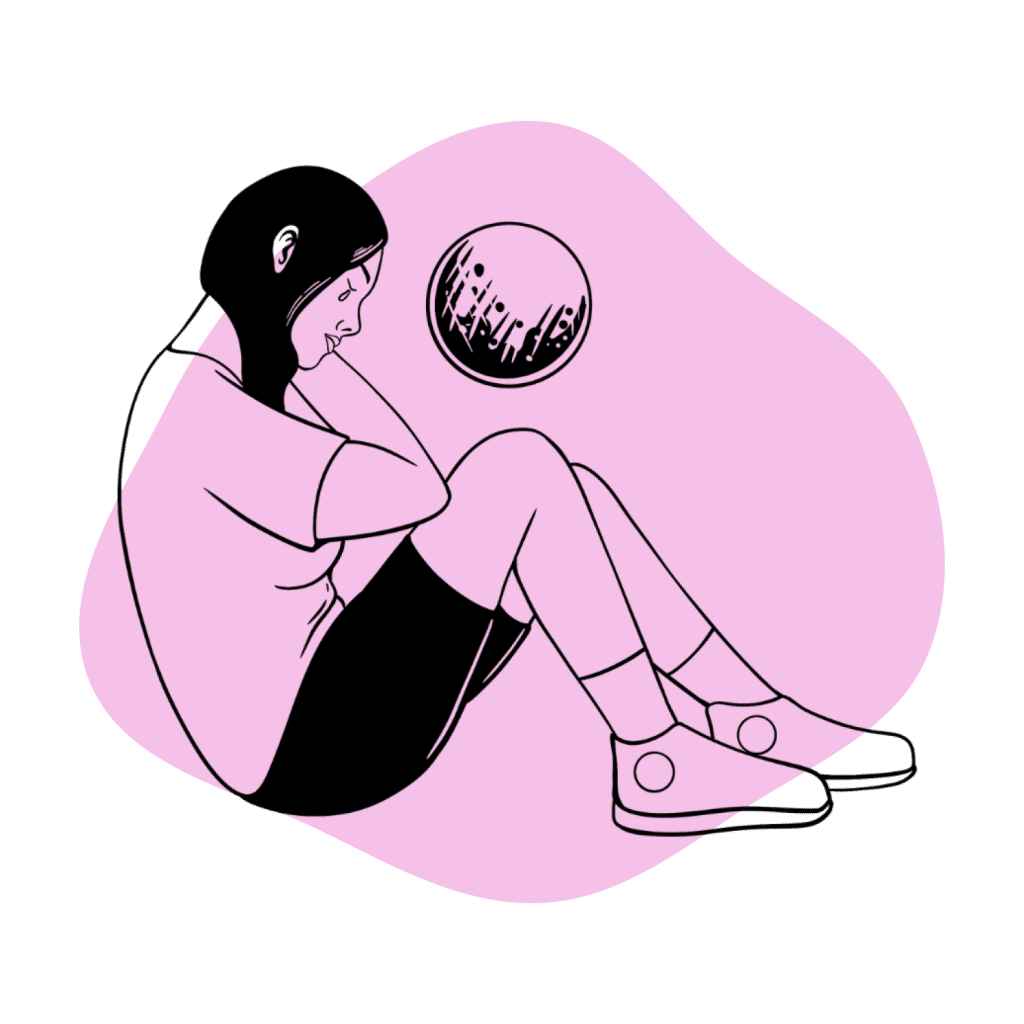
Still, in terms of the biggest dangers, benzodiazepines are largely on even ground. For this reason, even though we don’t know much about dirazepate, we can still be confident when assessing its risk.
In general terms, all benzodiazepines are relatively safe when they’re used with proper care, but misuse can dramatically increase the risk level.
This is primarily due to the pharmacological danger inherent in concomitant CNS depressant use.
Side Effects of Dirazepate
As stated before, benzodiazepines display a common side effects profile with minimal variation.
The most common benzodiazepine side effects include:
- Blurred vision
- Confusion
- Constipation
- Dizziness
- Drowsiness
- Dry mouth
- Light-headedness
- Memory problems
- Muscle weakness
- Nausea (feeling sick)
- Slurred speech
- Unsteadiness (especially in older people, who may fall and experience injuries)
Rarer side effects include:
- Blood disorders
- Changes in sexual desire
- Difficulty urinating.
- Digestive disturbances
- Gynecomastia (breast development in people assigned male at birth).
- Headaches
- Incontinence (loss of bladder control)
- Increased saliva production
- Jaundice (yellow skin)
- Low blood pressure
- Rashes
- Sight problems, such as double vision
- Tremors (shaking)
Benzodiazepine side effects are strongest at the beginning of treatment, and a reduction in dosage is usually enough to bring them under control.

The variation in benzodiazepine side effects relates to which properties they emphasize more. For instance, hypnotic benzodiazepines will have a higher propensity for side effects associated with sedation, like residual drowsiness and confusion.
Benzodiazepine Withdrawal & Dependence
Apart from overdoses and serious side effects — both of which are rare occurrences — the biggest risk associated with benzodiazepine use is the potential to develop a physical dependence, as well as the withdrawal symptoms this implies. Indeed, benzodiazepine use has caused addiction in a significant minority of users.
Research has shown four main factors affect the formation of benzodiazepine dependence [2]:
- Daily benzodiazepine use for more than four months
- High dose (the higher the dose, the higher the dependence liability)
- Sudden cessation of benzodiazepine use
- Use of a short-acting benzodiazepine over a longer or intermediate-acting one
By controlling for these four factors, benzodiazepine users can limit the likelihood of developing a dependence.
It’s also important to be aware of the unique dangers associated with benzodiazepine withdrawal symptoms. Due to certain factors related to the GABA-mediated pathway, benzodiazepine withdrawal symptoms are particularly nasty. If left untreated, they may even turn deadly.
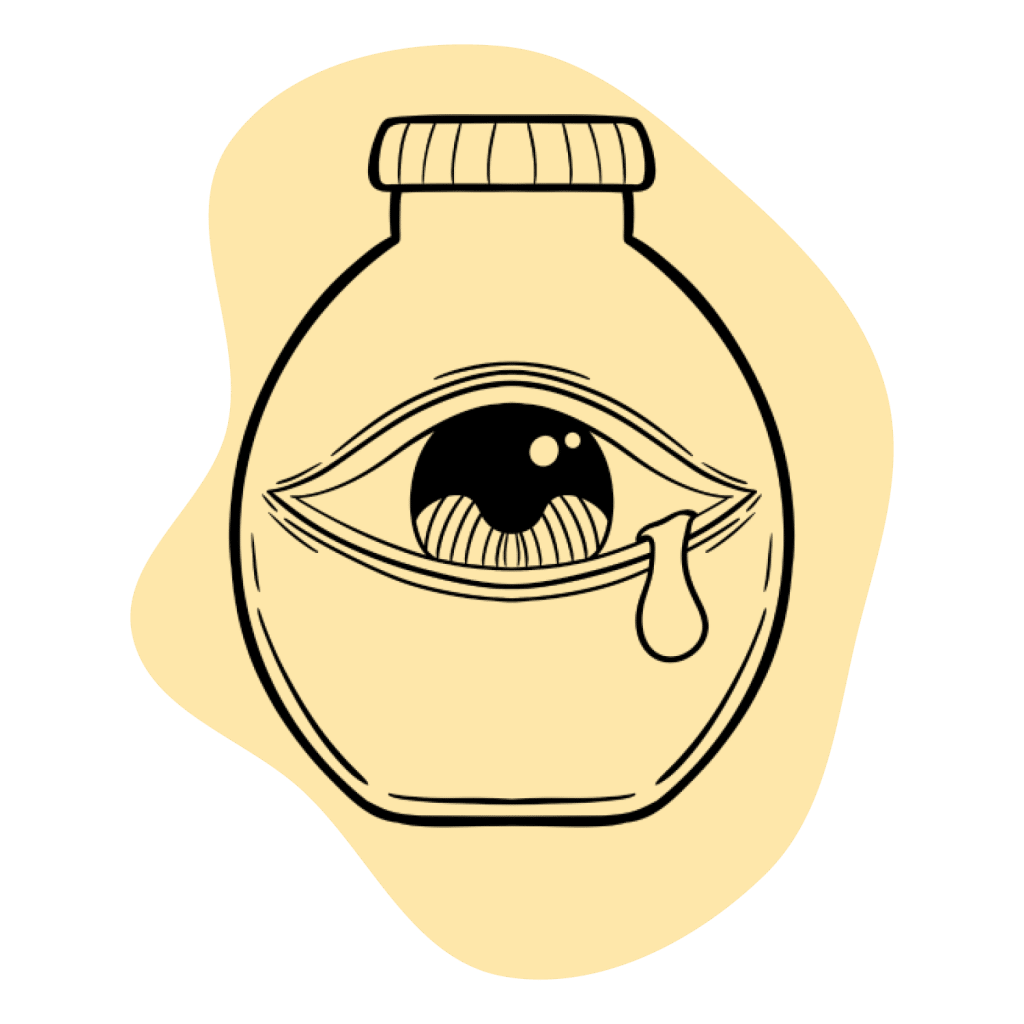
This is a rare occurrence but shows just how dangerous benzodiazepine withdrawal symptoms can be. Users should never try to get off benzos by themselves.
In most cases, it’s necessary to go through a drawn-out process of drug tapering, which is always safest when planned out by a doctor.
Harm Reduction: Dirazepate
Benzodiazepine Harm Reduction Tips:
- 🥣 Don’t mix — Mixing benzodiazepines with other depressants (alcohol, GHB, phenibut, barbiturates, opiates) can be fatal.
- ⏳ Take frequent breaks or plan for a short treatment — Benzodiazepines can form dependence quickly, so it’s important to stop using the drug periodically.
- 🥄 Always stick to the proper dose — The dosage of benzos can vary substantially. Some drugs require 20 or 30 mg, and others can be fatal in doses as low as 3 mg.
- 💊 Be aware of contraindications — Benzodiazepines are significantly more dangerous in older people or those with certain medical conditions.
- 🧪 Test your drugs — If ordering benzos from unregistered vendors (online or street vendors), order a benzo test kit to ensure your pills contain what you think they do.
- 💉 Never snort or inject benzos — Doing so is dangerous and provides no advantage with the drug itself. Only ever take your Benzos orally.
- 🌧 Recognize the signs of addiction — Early warning signs are feeling like you’re not “yourself” without the drug or hiding your habits from loved ones.
- ⚖️ Understand the laws where you live — In most parts of the world, benzodiazepines are only considered legal if given a prescription by a medical doctor.
- 📞 Know where to go if you need help — Help is available for benzodiazepine addiction; you just have to ask for it. Look up “addiction hotline” for more information for your location (USA: 1-800-662-4357; Canada: 1-866-585-0445; UK: 0300-999-1212).
Dirazepate Drug Interactions
The drug combination benzo users most need to watch out for is the concomitant use of another compound with CNS-depressing qualities. These mixtures are the most likely to lead to deadly side effects. The recent explosion in benzodiazepine-related deaths in the United States is almost exclusively due to mixing two or more depressant drugs.
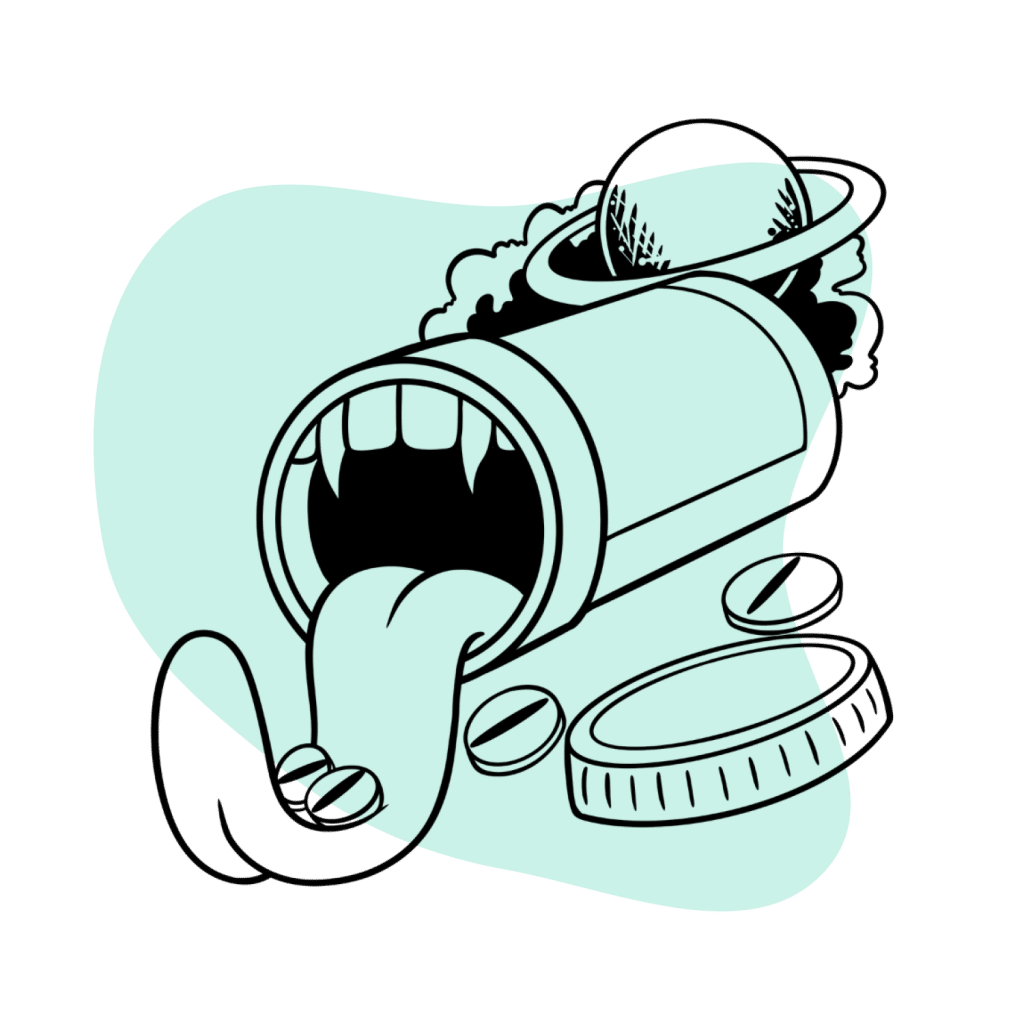
The lethality of combining benzos with other depressants arises from the possibility of severe respiratory depression. When users mix depressant compounds, the effect is exponentially stronger. Often, this ends up causing excessive sedation and the cessation of proper respiratory functions, resulting in death.
Dirazepate Contraindications
Dirazepate is contraindicated for the following conditions and compounds:
- Hepatic impairments
- Known hypersensitivity to benzodiazepines
- Myasthenia gravis
- Pregnancy/lactation
- Psychiatric disorders
- Sleep apnea
Similar Benzodiazepines
Since we have no information on dirazepate’s pharmacology or pharmacokinetics, we can’t really know what benzodiazepine compounds it’s similar to.
Natural Alternatives to Benzodiazepines
The breadth of benzodiazepine-related effects is not exclusive to these compounds. In fact, plenty of natural, plant-based compounds like kratom and the kava plant can produce incredibly similar properties.

As a general rule, natural compounds aren’t as potent as pharmacological products, but they are much safer regarding side effects and are less likely to produce physical dependence.
However, plenty of natural alternatives exist when it comes to the sedative, anxiolytic, and hypnotic properties! For many benzodiazepine users, these products can offer effective relief — so why not try out a safer, natural product?

Dirazepate FAQs
1. What company developed dirazepate?
Sanofi Winthrop developed Dirazepate but never took it to market.
2. What are the effects of dirazepate?
Given the lack of studies, we cannot answer this question with any certainty. However, when it comes to 1,4- benzodiazepines, there’s usually a strong emphasis on anxiolytic properties and long-lasting effects.
References
- Batlle, E., Lizano, E., Viñas, M., & Pujol, M. D. (2019). 1, 4-Benzodiazepines and new derivatives: description, analysis, and organic synthesis. Medicinal chemistry, 63-90.
- Owen, R. T., & Tyrer, P. (1983). Benzodiazepine dependence. Drugs, 25(4), 385-398.

